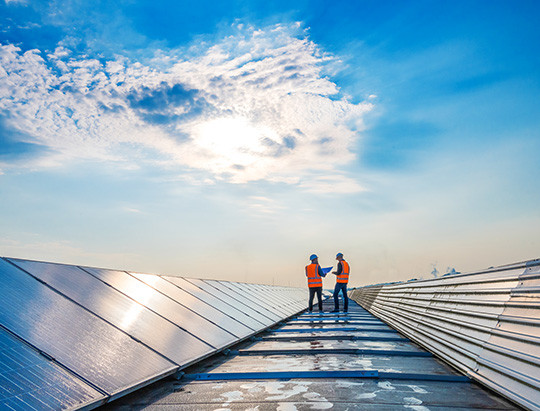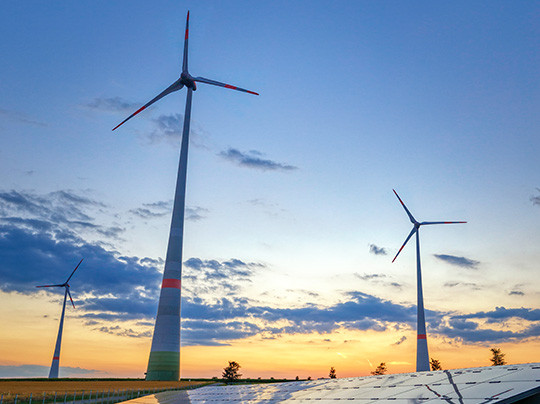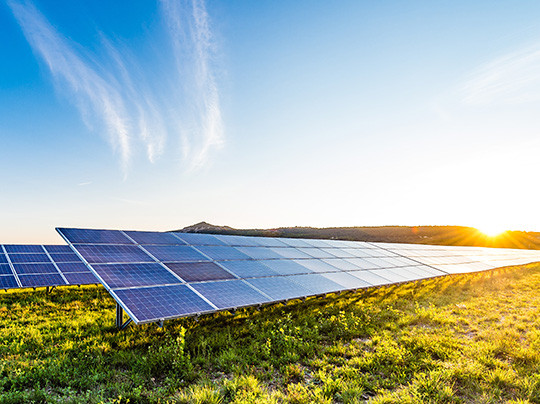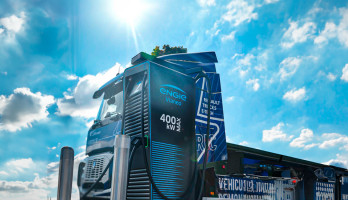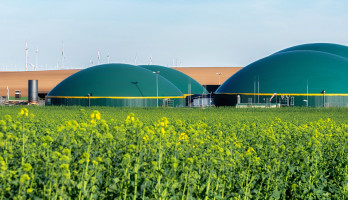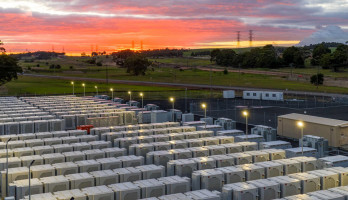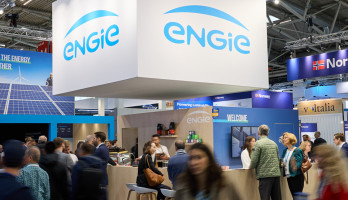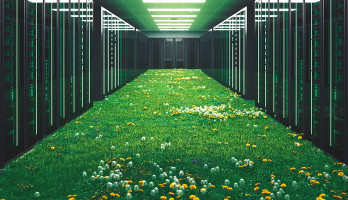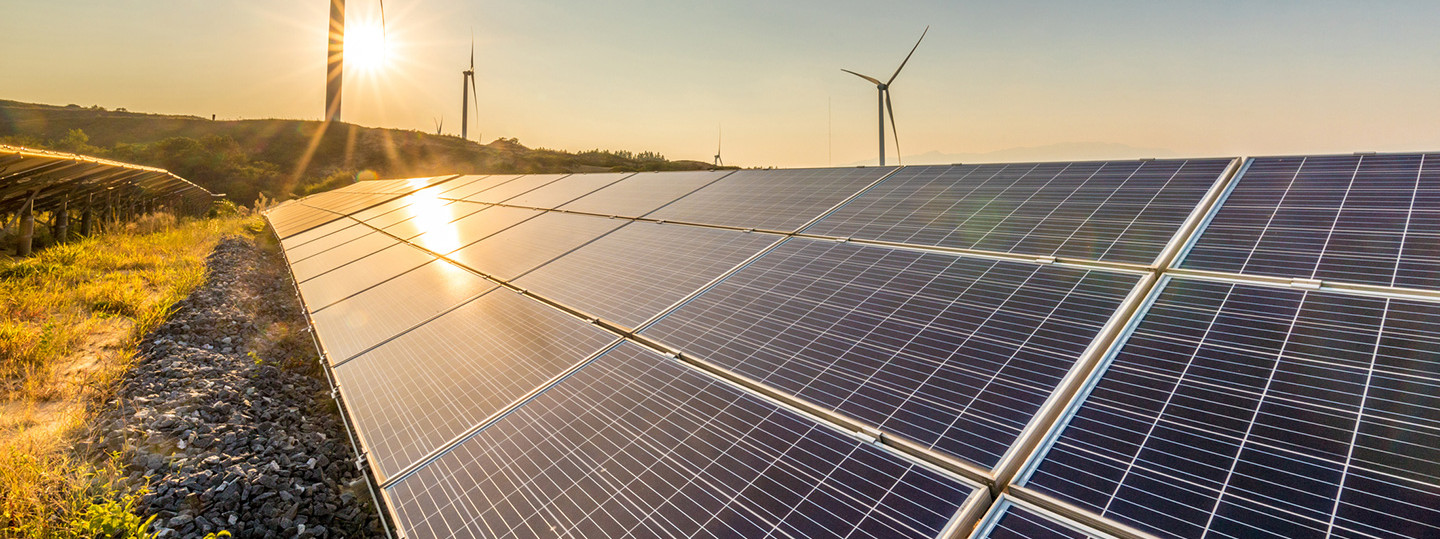
Onsite PPA with photovoltaics - a strong response to the signs of the times
Power purchase agreements (PPAs) are modern electricity supply contracts for companies. But can you conclude an agreement for plants directly on your own premises? Is it possible to think locally and implement a PPA on site? In fact, yes - and very successfully so. In this article, you will learn more about so-called onsite PPAs and read why photovoltaics is a key technology in this context.
The call for more independence
Put your money where your mouth is and take a decisive approach to decarbonization. Finally end dependence on fossil energy and switch to renewables. This is what many companies are planning to do in light of skyrocketing energy prices and the numerous uncertainties in recent months. It's about (affordable) security of supply and sensible options on the path to climate neutrality.
Onsite PPA with Photovoltaics: Produce Energy on Site Yourself
Making themselves independent with their own renewable electricity production is an obvious solution for companies. But buying in power generation plants, setting them up on the premises and operating them over the long term requires technical understanding and know-how in financial and legal matters. Whether it's photovoltaics, wind power, or another technology, there are a plethora of products and options. Numerous technical and regulatory aspects have to be taken into account. On top of that, who is to look after and maintain the energy generation facilities? Are human resources available for this? Making self-sufficient green power production a reality raises many questions, is extremely complex and a mammoth task for those unfamiliar with the subject. Onsite power purchase agreements are currently establishing themselves on the market as a clever answer.
Onsite PPA with photovoltaics - decarbonizing on your own site
An onsite PPA is basically an all-round carefree package in terms of green energy technology. This special form of a power purchase agreement enables companies to switch quickly and smoothly to a local, basically self-sufficient energy supply. On top of that, the power purchase agreements are an economically viable and rewarding option, especially with photovoltaics. They can be obtained through energy service providers such as the ENGIE subsidiary Solarimo.
How Onsite PPAs work
- In traditional PPA business models, the electricity supplied comes from generation plants that are not necessarily in the immediate vicinity of the company purchasing the electricity. For example, a PPA contract may include power delivered from green generation facilities located in a completely different state.
- The onsite model, on the other hand, focuses on the local idea. The company makes space available on its own premises for power generation. Depending on the energy source, this can be roof areas or open spaces.
- There, the energy service provider installs a generation plant for green electricity. The key feature of an onsite PPA is that the electricity is generated and consumed directly on site. As a rule, between 85 and 100 percent of the electricity generated by the plant goes directly to the customers - depending on their energy needs.
An onsite PPA enables a company to obtain a reliable supply of green electricity, decoupled from the energy markets - and with no initial investment. Customers do not have to buy their own plant, build up technical expertise, or manage generation facilities. The energy service provider remains the operator and owner of the power generation plants. He also takes over the planning of the plant solution, installs the technology, and takes care of operation and maintenance. Customers do not have to worry about anything and benefit from an expert solution for green energy.
In addition, onsite PPAs are usually long-term contracts over 10 to 20 years - usually with fixed or indexed prices for electricity supply. This provides companies with calculatory security for a long period of time. Onsite PPAs are therefore an excellent option for decarbonization.
Onsite PPA with photovoltaics: the fastest entry into on-site green power generation
When choosing the energy source for an onsite PPA, companies in principle have several options open to them. Two solutions in particular are common: Wind power and solar power.
Wind power
Wind power is an excellent technology for renewable electricity. And there are not only those large superstructures that stand on meadows and fields in many parts of Germany. Modern wind turbines can be built extremely compactly. However, while wind turbines are powerful, they are expensive to purchase and operate. Construction and commissioning often take several years. This makes wind power only conditionally suitable as a solution for rapid green power supply.
Photovoltaics
Photovoltaics, on the other hand, is predestined to meet the growing demand for onsite delivery models. Solar power is a mature technology. It is indeed convincing as the fastest and most cost-effective way to save CO2 in the energy sector. Photovoltaic systems can be installed quickly, inexpensively and flexibly. This is possible among other things on roofs even with only small still available roof loads. Unused open spaces, superstructures for parking lots - so-called solar carports - as well as innovative concepts such as Agri-PV are also possible.
A major advantage of photovoltaics is that, compared to other energy sources, there are hardly any regulatory hurdles. In Germany, rooftop systems do not even require a building permit. This makes solar power the ideal solution for a quick green power supply on site. In addition, solar panels do not change the landscape as much as wind turbines. They are flat, compact and, unlike a wind turbine, run silently.
Onsite PPA with Photovoltaic - low cost green power "as a service"
For onsite PPAs with photovoltaics, as we offer them, there are basically no standard products. The technical components as well as the contract details are always planned individually and optimized for the customer's needs. That is why we attach great importance to comprehensive consulting and technical support. Solarimo's energy experts get an exact picture on site and decide where which solution makes the most sense. They also clarify important points in order to prepare a first indicative offer.
- This includes, among other things, the review and potential assessment of the areas available for photovoltaic systems.
- Architectural conditions such as the static requirements or circuit diagrams of the buildings also play a role.
- By analyzing the load profiles of the customers, the required system dimensions are derived so that a consumption-optimized infrastructure can be implemented.
- In addition, the customer's previous expenditure on electricity is examined. Based on a reference price, a more favorable supply solution can usually be found. Many customers are surprised that they even save costs with a photovoltaic PPA.
The requirements for PPA contracts
There is no specific requirement for the size of a company and the amount of electricity purchased for onsite PPAs with photovoltaics. Sensible contracts start at a supply volume of 50,000 to 100,000 kWh per year. Companies in the commercial and industrial sector should also ideally have free space of several 100 square meters. It is always necessary to check in detail to what extent the areas are suitable for a photovoltaic infrastructure. For example, a safety distance must be maintained from fire walls and chimneys. This can limit the total area that can potentially be built on. Implementation then usually proceeds quickly. Depending on the approval processes on the customer side, technical requirements and the availability of components, the local supply of green electricity can start after less than half a year. Yes, taking the path toward Net Zero can really be that simple.
Onsite PPA: A real-world example
At ENGIE, we are currently seeing a real run on onsite PPAs with photovoltaics. No wonder, because the contracts currently offer in principle the best solution for a rapid green power supply on site. A prime example is provided by the new project with our customer Grünenthal. Our subsidiary Solarimo is currently building an open-space photovoltaic plant for the pharmaceutical company on Grünenthal's factory premises in Aachen. The onsite PPA includes a total of 4,000 photovoltaic modules with a maximum output of 1.9 megawatts. Grünenthal saves around 366 tons of CO2 emissions per year thanks to the plant. Further details on the project can be found in our press release.
Outlook
Photovoltaics is a future-oriented technology whose technical and economic potential is far from exhausted. As an energy source in the PPA sector, it will play a leading role in the future. We also expect the upcoming package of resolutions on the German government's photovoltaic strategy to further reduce regulatory hurdles and make it even easier for companies to consistently pursue their climate efforts.
Various technological innovations for the onsite sector are currently still dreams of the future, but may soon become reality. These include PPAs with a combination of modern energy sources - in addition to photovoltaics, also heat pumps or the generation of hydrogen and e-fuels. We are also working intensively on the storage of renewable energies. Currently, for example, the expansion of photovoltaic solutions with battery systems and intelligent energy management is on the agenda. Our new Flexisun offering provides companies with completely new options in this area.
In any case, it remains exciting. The energy industry is currently undergoing rapid change and it is gratifying that more and more companies are opting for green energy and active climate protection. ENGIE Deutschland accompanies them on this path as a strong partner with onsite PPAs and other advanced solutions.
Our Expert

